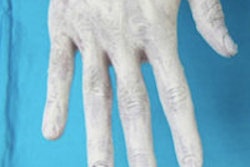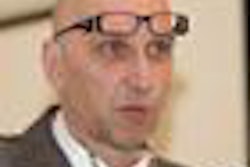Who knew that when x-rays were discovered in 1895 by Wilhelm Röntgen, the technology they spawned would still be so relevant and undergoing so much change more than 100 years later? The scientific sessions, poster presentations, and refresher courses at RSNA 2013 reflect x-ray's staying power.
First of all, how do you ensure proper exposure, what's the best technique, and what about optimum radiation dose? In a multisession course on Thursday from 9:20 a.m. to 10:20 a.m. (MSRT52, Room N230), radiologic technologist Dennis Bowman will discuss all this and more. He promises you can take the information back to your facility and immediately make changes in the way you expose and critique your images.
In another multisession course on improving practice in pediatric skeletal radiography on Thursday from 3:40 p.m. to 4:40 p.m. (MSRT56, Room N230), Maryann Hardy, PhD, will explore how knowledge of skeletal development during childhood can prevent the misapplication of image acquisition techniques and quality assessment criteria, as well as the misinterpretation of normal developmental variations.
A medical physics refresher course, titled Medical Physics 2.0: Radiography (RC421, Room E351), is not to be missed on Tuesday from 4:30 p.m. to 6:00 p.m. Newer advances have addressed a number of prior shortcomings, but they have also introduced new challenges, such image postprocessing; it's praised as one of the assets of digital x-ray, but has often been underutilized. In this refresher course, participants will receive a historical perspective on these topics and information on areas worth the focus of the medical physics community.
Another area to focus on comes from a poster out of Japan about current techniques and clinical usefulness of digital tomosynthesis for chest imaging: What the Radiologist Needs to Know (LL-PHE4182, Lakeside Learning Center). Dr. Haruhiko Machida will describe basic principles and current techniques, demonstrate various nonmammographic digital tomosynthesis applications by presenting clinical images, and illustrate the clinical advantages, limitations, and optimal strategies of digital tomosynthesis.
Speaking of digital tomosynthesis, that's one of the hot topics at RSNA 2013. Digital tomosynthesis comes up in terms of lung cancer screening with the question being, can it replace CT? Find out for yourself in two scientific sessions, one on Monday, December 2, from 11:10 a.m. to 11:20 a.m. (SSC04-05, Room S404AB) and another on Tuesday, December 3, from 3:00 p.m. to 3:10 p.m. (SSJ06-01, Room S404CD), as well as a poster presentation on Thursday, December 5, from 12:45 p.m. to 1:15 p.m. (LL-CHS-TH1B, Lakeside Learning Center).
What's interesting about x-ray is that it remains in monochrome format, even as most commercial imaging techniques, such as photography, films, and display, evolved from monochrome to color. That could be set to change, according to Dr. Hye Sun Hwang from Samsung Hospital in Seoul, South Korea. In a poster presentation on Thursday from 12:15 p.m. to 12:45 p.m. (LL-CHS-TH1A, Lakeside Learning Center), Hwang and colleagues will show the feasibility of color radiography, even though it's not practical yet. Perhaps it will be a game changer within the next decade? Check out the poster to find out.
Last, but certainly not least, on Wednesday morning Dr. Shoichi Takekawa will share information gleaned about Japan's radiation dose levels in the wake of the Fukushima Daiichi nuclear power plant incident (10:50 a.m.-11:00 a.m., SSK11-03, Room S405AB) -- an important global story for sure.
See below for previews of digital x-ray-related scientific sessions and posters at this year's RSNA meeting. To view the RSNA's listing of abstracts for this year's scientific and educational program, click here.



















